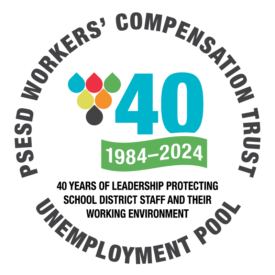Part of keeping schools safe is to protect both students and staff from getting harmed by a broad variety of potentially hazardous chemicals and products, and to minimize hazardous exposures. Not all sources of dangerous chemicals in schools are obvious. Don’t think only of science laboratories.
Chemicals and mixtures are used in:
- Technical education shops
- Art classes
- District maintenance, operations, and transportation
- Health rooms
- Pools
- Kitchens
- Early learning programs
Aside from the program specific materials, we also frequently see staff bringing in their own preferred cleaners, disinfectants, “air fresheners”, essential oils, and even candles – all of which emit unnecessary and potentially hazardous chemicals into the indoor environment.
Very few chemicals are truly non-hazardous. They can be flammable, toxic, corrosive, cause some degree of irritation, and most have a combination of dangerous properties. Hazardous effects depend on what, how much, and how frequently the product is used, making preplanning and knowledge about chemicals and products BEFORE they are purchased and brought to schools is necessary.
The goal is to minimize all potentially hazardous exposures. Always.
Some relevant examples to look out for:
- Art: Flammable and toxic solvents, inks and protective sprays, potentially toxic paints, photo developing chemicals, silica containing dust, and toxic and/or carcinogenic heavy metal-containing glazes used in pottery
- Custodial Chemicals: Disinfectants kill living cells and may be toxic to humans, corrosive, and irritating, cleaner concentrates, toxic and flammable graffiti removers, corrosive toilet cleaners, sprays that produce a fine, polluting mist that may cause respiratory irritation while increasing the chance for inhalation of chemicals.
- Maintenance Supplies and Equipment: Corrosive drain cleaners and floor stripping products, flammable and toxic solvents and degreasers, paints, oils, boiler cleaners, fuels, mercury switches and gauges, deicers, and sprays.
- Landscaping: Pesticides that kill living cells, toxic or irritating fertilizers.
- Health Rooms: Increased use of disinfectants and cleaners, mercury thermometers.
- Transportation: Disinfectants, cleaners, fuel, repair shop chemicals, such as solvents, degreasers, and sprays.
- Pools: Toxic chlorine-based water treatment chemicals and disinfectants.
- Food Service: Increased use of disinfectants and cleaners, corrosive stainless-steel cleaners.
- Physical Education and Early Learning: Increased cleaning and disinfection, and , corrosive bleach used in Early Learning programs.
The chemical exposure/pollution problem can be compounded by poor or inappropriate ventilation in the areas where chemicals are used or stored. Recycled air can also redistribute volatile chemicals to other areas of the building exposing unsuspecting employees and students and degrading the quality of the indoor environment.
Federal and Washington State Regulations aim to protect employee health at workplaces where hazardous chemicals are used. Please see the Chemical Hazard Communication page on our website for details about regulatory requirements and how to apply them to schools.
The WCT’s Industrial Hygiene Consultant can assist member districts in setting up and updating their hazard communication programs. The SafeSchools/Vector Solutions on-line training system provides free, convenient, basic training segments for Chemical Hazard Communication, Safety Data Sheets (SDS), and Spills. After the completion of this basic training package, we can assist with more specific and higher-level customized training. The IH Consultant also provides site inspections, consults on cleanouts and waste disposal, and on the selection of less hazardous alternatives.
Please contact WCT’s Industrial Hygiene Consultant Elizabeth Jakab or call 425-917-7640 for assistance.
References & Resources:
- EPA: Chemical Management Resource Guide for School Administrators: https://www.epa.gov/sites/default/files/2017-01/documents/chemical_management_resource_guide_school_administrators_508.pdf
- Globally Harmonized System (GHS) for Hazard Communication, or “Right to Understand” regulation https://apps.leg.wa.gov/wac/default.aspx?cite=296-901
- Review our Science Lab Safety page for more information.



